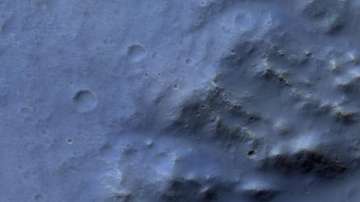The European Space Agency (ESA) has shared stunning images of a 5-km long landslide on Mars. According to the space agency, Exo-Mars Orbiter which is hovering above the Red Planet captured the landslide that can be seen at the rim of a 35 km wide crater in the Aeolis region of the Red Planet.
Landslides are geomorphological processes occurring under specific environmental conditions. On Mars as on Earth, they come in various shapes and sizes, and Earth analogues are used to understand similar processes seen on planetary bodies.
For this particular landslide, the failure area from where the material collapsed is slightly out of frame, although the transport and deposit zones show great details such as longitudinal striations and flow ridges.
The impact craters on the lobe indicate that this is not a recent event, but it remains a challenge to accurately date its formation.
TGO arrived at Mars in 2016 and began its full science mission in 2018. The spacecraft is not only returning spectacular images, but also providing the best ever inventory of the planet’s atmospheric gases, and mapping the planet’s surface for water-rich locations. It will also provide data relay services for the second ExoMars mission comprising the Rosalind Franklin rover and Kazachok platform when it arrives on Mars in 2023.
ALSO READ | Will it be safer for humans to fly to Mars? Here's what researchers suggest
ALSO READ | China's Mars rover Zhurong accomplishes planned exploration tasks
